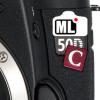
stephen
-
Posts
186 -
Joined
-
Last visited
Reputation Activity
-
 stephen got a reaction from kye in Color science
stephen got a reaction from kye in Color science
Fully agree with TheRenaissanceMan and you. We are on the same page here. How easy or difficult it is to get the color we want makes huge difference. My comments about RAW were mostly for photo. Tony's test is mostly for the photo side of hybrid cameras. Adding video in the bag is not correct, because:
a. as you point out most DSLR mirrorless cameras shoot 8bit 4:2:0 which is quite different and limited compared to RAW and even JPG. Getting the colors we want may be quite difficult and time consuming.
b. RAW video is not = to RAW photo. Most if not all cameras shoot RAW video but in log format. Which means some kind of additional processing related to colors is applied in camera. It is not the RAW image as it comes from the sensor. And cameras from different companies have different log formats, even the sensor is the same. For example Panasonic GH5S and Blackmagic Pocket Cinema Camera 4K. Same sensor, different log formats.
In both cases there is some form of in camera color processing/manipulation. We still have the problem measuring those colors in RAW, we still have to go with the development process before any measurement is possible. But it would be correct to say there is in camera color science and is logical to expect that it will affect the end results.
Tony's argument that people will not notice and object slight variation in color and sometimes even big color shifts also is not correct for video. We still want to get the colors we want and even we ignore this we still have to color match different sequences under different lighting condition in one movie/clip.
-
 stephen got a reaction from frontfocus in Color science
stephen got a reaction from frontfocus in Color science
There are no colors yet in RAW. What to test then ? The color science of the developing programs or the skills of the person working with it ? For photography everybody is using RAW for serious work but yet argue about BETTER color science which affect only JPG and is different for different profiles and is subjective at the end. Better doesn't mean accurate. Better is very subjective. In this part he's right IMHO.
For video however it's different. For those mirroless / DSLR cameras we don't have the choice of using RAW video. We still can tweak the colors but are much more limited, white balance is backed in. Tweaking the colors the way we like them is not that easy in video as to take a RAW file and fix the white balance. Getting the colors close to the final edit straight off the camera for video may save tons of time and effort. So don't agree with him when he throws video in the argument but does only test photo.
-
 stephen got a reaction from Geoff CB in Color science
stephen got a reaction from Geoff CB in Color science
There are no colors yet in RAW. What to test then ? The color science of the developing programs or the skills of the person working with it ? For photography everybody is using RAW for serious work but yet argue about BETTER color science which affect only JPG and is different for different profiles and is subjective at the end. Better doesn't mean accurate. Better is very subjective. In this part he's right IMHO.
For video however it's different. For those mirroless / DSLR cameras we don't have the choice of using RAW video. We still can tweak the colors but are much more limited, white balance is backed in. Tweaking the colors the way we like them is not that easy in video as to take a RAW file and fix the white balance. Getting the colors close to the final edit straight off the camera for video may save tons of time and effort. So don't agree with him when he throws video in the argument but does only test photo.
-
 stephen got a reaction from Andrew Reid in Color science
stephen got a reaction from Andrew Reid in Color science
There are no colors yet in RAW. What to test then ? The color science of the developing programs or the skills of the person working with it ? For photography everybody is using RAW for serious work but yet argue about BETTER color science which affect only JPG and is different for different profiles and is subjective at the end. Better doesn't mean accurate. Better is very subjective. In this part he's right IMHO.
For video however it's different. For those mirroless / DSLR cameras we don't have the choice of using RAW video. We still can tweak the colors but are much more limited, white balance is backed in. Tweaking the colors the way we like them is not that easy in video as to take a RAW file and fix the white balance. Getting the colors close to the final edit straight off the camera for video may save tons of time and effort. So don't agree with him when he throws video in the argument but does only test photo.
-
 stephen got a reaction from Inazuma in Color science
stephen got a reaction from Inazuma in Color science
He mentions that color science apply to JPG photo and video. RAW allows you to change colors as you like when developing. Test was for JPG photos. He also says that there were indoor scenes and outdoor scenes, so in my understanding it's not only the photo he's showing in the video. There were several photos/scenes but he’s showing only one as an example. He says nothing about the creative style / picture profile used. So assume standard was used for all cameras.
Dave Dugdale has a video comparing all Sony A7 III creative styles. With picture profiles off, standard creative style seems to be the best for skin tones in video.
https://www.youtube.com/watch?v=q6VyspXsS5I
Tested it in other scenes and scenarios. Surprisingly it works well and am quite pleased with the results in most of those scenes. Dynamic range is not the best but not all scenes need it. Use standard for video quite often. So this is one more confirmation Sony colors in last generation cameras (A7 III, A7R III) seems to be accurate in Standard style.
-
 stephen got a reaction from austinchimp in Color science
stephen got a reaction from austinchimp in Color science
IMHO Tony actually did a very good test/survey. Blind tests are rare. Certain parts may be questionable but general conclusions are valid IMHO and quite revealing:
1. Color perception and preferences are subjective. Both for professionals and nonprofessional viewers.
2. Brand loyalty skew personal opinions even more.
3. Slight variations of colors usually gets unnoticed by the general public(viewers) and even by professionals. We start to see the differences when we compare different cameras / images. Quite true IMHO.
While there is definitely science in colors, personal preferences rules at the end. There is nothing scientific in personal preferences. So saying that camera A has better color science than camera B is somewhat wrong, when we discover that BETTER is subjective. Better color does not mean scientifically correct colors it just means colors we personally like and prefer. A blind test just prove how off those personal preferences may be. So it's correct to say better colors FOR ME.
Does it means we do not need LUTs or adjusting colors or use Andrew's EOS Pro Colors settings? Are color adjustments really just one click of the button away? Of course not. Getting the colors we want or like may be quite time consuming in both photo and video. If we like the colors of our videos strait off the camera and want to leave them like this, then fine. If we prefer the colors of camera A better than camera B, and have camera A then lucky us. But if we don’t like the colors straight off the camera or want some special colors and/or vision then we have to tweak them. In video this can be quite laborious and time consuming. Color correction and grading is a well payed profession. If somebody already have presets that tweak, adjust the colors the way we like it, well bring them on. He did the laborious part and those presets will save us quite a lot of time and work in post.
So Tony is right about the subjectivity but wrong when saying one click and white balance will do it for most of us. Unfortunately not that easy and simple.
IMHO he gave the example of white balance adjustment to show that all cameras have good RAW images to start with and differences are not that big.
-
 stephen got a reaction from Emanuel in Who is excited about Resolve 15?
stephen got a reaction from Emanuel in Who is excited about Resolve 15?
Tried v15 Beta 1.
Here are my initial impressions:
It's very simple and fast to add titles. There are many predefined 3D templates. More templates will come for sure.
LUT Browser is awesome if you use LUTs and want to try different color grades
Improved speed and interface.
Improved noise reduction. In v14 noise reduction was good enough for me. V15 is even better.
Very easy to remove objects and/or spots / blemishes on the footage
Whole workflow is well thought and using all the tools is easy and quite intuitive.
Bottom line: It's my only video editing software now. Has everything I need and like it a lot. Well done Blackmagic.
-
 stephen got a reaction from kye in Who is excited about Resolve 15?
stephen got a reaction from kye in Who is excited about Resolve 15?
Tried v15 Beta 1.
Here are my initial impressions:
It's very simple and fast to add titles. There are many predefined 3D templates. More templates will come for sure.
LUT Browser is awesome if you use LUTs and want to try different color grades
Improved speed and interface.
Improved noise reduction. In v14 noise reduction was good enough for me. V15 is even better.
Very easy to remove objects and/or spots / blemishes on the footage
Whole workflow is well thought and using all the tools is easy and quite intuitive.
Bottom line: It's my only video editing software now. Has everything I need and like it a lot. Well done Blackmagic.
-
 stephen got a reaction from TheRenaissanceMan in Who is excited about Resolve 15?
stephen got a reaction from TheRenaissanceMan in Who is excited about Resolve 15?
Tried v15 Beta 1.
Here are my initial impressions:
It's very simple and fast to add titles. There are many predefined 3D templates. More templates will come for sure.
LUT Browser is awesome if you use LUTs and want to try different color grades
Improved speed and interface.
Improved noise reduction. In v14 noise reduction was good enough for me. V15 is even better.
Very easy to remove objects and/or spots / blemishes on the footage
Whole workflow is well thought and using all the tools is easy and quite intuitive.
Bottom line: It's my only video editing software now. Has everything I need and like it a lot. Well done Blackmagic.
-
 stephen got a reaction from heart0less in Who is excited about Resolve 15?
stephen got a reaction from heart0less in Who is excited about Resolve 15?
Tried v15 Beta 1.
Here are my initial impressions:
It's very simple and fast to add titles. There are many predefined 3D templates. More templates will come for sure.
LUT Browser is awesome if you use LUTs and want to try different color grades
Improved speed and interface.
Improved noise reduction. In v14 noise reduction was good enough for me. V15 is even better.
Very easy to remove objects and/or spots / blemishes on the footage
Whole workflow is well thought and using all the tools is easy and quite intuitive.
Bottom line: It's my only video editing software now. Has everything I need and like it a lot. Well done Blackmagic.
-
 stephen got a reaction from maxotics in Sony A7s DIY 4K Recorder
stephen got a reaction from maxotics in Sony A7s DIY 4K Recorder
According to the last reviewer on the BHphotoVideo page Inogeni 4K to USB3 converter works with A7S.
But USB3 output for 4K is only 4:2:0 8Bit while Sony A7S HDMI 4K feed is 4:2:2 8Bit, so there is some loss of color information.
Specs on BHphotovideo page are not full, you can find the details here.
http://www.dexteralabs.com/inogeni/
Hadrware requirements are Core i5 with 4Gb RAM. Pair it with MS Surface 1 or 2 and you get cheaper (under 1K) recorder than shogun but slightly bigger, heavier and of course without the nice screen and many recording options. Not sure if it is worth it.
Blackmagic has much cheaper (200$) PCI card for 4K capture if you are willing to use desktop computer. For me it's not viable option but here it is:
https://www.blackmagicdesign.com/products/intensitypro4k
-
 stephen got a reaction from Alex Lobos in Sony A7s DIY 4K Recorder
stephen got a reaction from Alex Lobos in Sony A7s DIY 4K Recorder
According to the last reviewer on the BHphotoVideo page Inogeni 4K to USB3 converter works with A7S.
But USB3 output for 4K is only 4:2:0 8Bit while Sony A7S HDMI 4K feed is 4:2:2 8Bit, so there is some loss of color information.
Specs on BHphotovideo page are not full, you can find the details here.
http://www.dexteralabs.com/inogeni/
Hadrware requirements are Core i5 with 4Gb RAM. Pair it with MS Surface 1 or 2 and you get cheaper (under 1K) recorder than shogun but slightly bigger, heavier and of course without the nice screen and many recording options. Not sure if it is worth it.
Blackmagic has much cheaper (200$) PCI card for 4K capture if you are willing to use desktop computer. For me it's not viable option but here it is:
https://www.blackmagicdesign.com/products/intensitypro4k
-
 stephen got a reaction from andy lee in Building a Lens Set
stephen got a reaction from andy lee in Building a Lens Set
Andy, your posts about lenses, look, how they are used in movies were eye opening for me ! Lots of useful info. Thanks a lot for sharing. Ordered New Cinematographers book too :)
Following you recommendations about Yashica lenses, got locally a set of 28mm f/2.8, 50mm f/2 and 135mm f/2.8 + 35mm f/2.8 + 50mm f/1.7 from other sellers. Total price for the 5 lenses - 200 Euro. They were hanging for months and nobody wanted them even for low price. Except me :)
To complete the set would need 24mm f/2.8 and something in the 80ths range where Yashica has no prime lenses. The only option seems to be Carl Zeiss Plannar 85mm f2.8 in same Contax / Yashica mount or Rollei mount (cheaper). Would go for C/Y version, just to be sure that colors and look would match. 85mm is not prohibitively expensive despite costing more than all other 5 lenses currently in the set. Yashica ML 24mm f/2.8 is expensive too and goes for something like 350$ on ebay. Don't know why. 28mm is cheap and optically 24mm should not be better but goes for 5-6 times more money.
Can buy the 42-75mm also locally for something like 20 Euro but it's f/4.5 at the long end. You have this zoom. 35mm and 50mm primes are covering most of the focal range and have bright f-stops (2-2.8). What good is 42-75mm for at f/3.5-4.5 ?
-
 stephen got a reaction from duffman in 5 reasons the Olympus E-M1 will NOT get 4K video!
stephen got a reaction from duffman in 5 reasons the Olympus E-M1 will NOT get 4K video!
For me rumor doesn't seem that farfetched. How Canon 50D which never had video officially, got one from Magic Lantern hack?
Obviously because the hardware (sensor and processor) were both capable for video but for some marketing or other reasons Canon didn't enabled it. The same idea was in the E-M1 rumor by way, hardware capable for 4K is there, Olympus just enables it now, because they were not ready at the launch of the camera. Don't want to argue about a silly rumor, we’ll soon know for a fact, just want to point that the idea is not that farfetched even more we have a precedent and a real one.
Also have doubts about argument No1. The idea that 4K video needs some extra work that generates extra heat is most likely no longer valid.
Will try to explain, just keep in mind that am no microelectronics engineer, so this is all speculation but logic is simple enough.
Sensor is sampled / read line by line horizontally. At least that is how current generation of sensors work. Prove – rolling shutter. Most of the sensors has to skip reading one or two lines in the process in order to save time and maybe heat too. But it seems sensors used in Panasonic GM1, GX7, GH4, Nikon D7100, D5200 new generation from Sony - A6000, A5100 no longer skip lines. Image is almost moire and aliasing free. This can't be and is not achieved by strong anti aliasing filter. Prove Nikon 7100 which doesn't have anti aliasing filter has the same video quality as D5200 which has one. It is achieved most likely by whole sensor read and some smart pixel binning method. So GM1 sample the whole sensor and is in a tiny body and heat doesn't seem to be a problem. Don't see a problem to slap 4K in it if Panasonic processor itself doesn’t generate too much heat. Hence the rumor about GM2 with 4K is not that farfetched too. A5100 and A6000 are with bigger sensors than E-M1 but in smaller bodies and also seems to have full sensor readout without line skipping and heat from sensor is not a problem.
So question is how E-M1 samples the sensor. In his review Andrew says moire and aliasing are present. So most likely sensor skip lines during sampling, which means 4K is most likely not possible, but for different reasons. Anyway we'll know soon :)
Atomos CEO predicted 20 new 4K cameras at NAB. About 5-6 materialized. Those 14-15 cameras missing so far are coming at some point.
-
 stephen got a reaction from Mirrorkisser in Blackmagic Pocket Cinema Camera c-mount lens compatibility list
stephen got a reaction from Mirrorkisser in Blackmagic Pocket Cinema Camera c-mount lens compatibility list
IMHO the exact ratio of BMPCC to Full Frame is 2.88
Full Frame Active sensor area for full HD video is 36 x 20.25mm
diagonal = sqr(36)+sqr(20.25)=sqrt(1706.0625) = 41.30
BMPCC active sensor area 12,48 x 7,02 mm
diagonal = sqr(12.48) + sqr(7.02) = sqrt(205.0308) = 14.3189
41.30/14.3189 ~ 2.88
Which is the same if you simple divide the long sides - 36/12.48 ~ 2.88
Most C-Mount lenses cover 2/3'', 1/3'' and 1/2'' inch sensor sizes. Probably only 10 to 15% of all C Mount lenses cover the 1'' sensor size needed for BMPCC. So most will vignette heavily on BMPCC and among those which do cover correctly the 1'' sensor size there may be still problems. Like:
1. Will the lens work without modification on a C- Mount to m43 adapter. Some don't. Can't focus on infinity and need some rework.
2. Is the image quality good enough. Most of those are surveillance camera lenses not optimized for high quality photo/video/film work. From what I've seen image quality on GH2 (tele converter mode) doesn't look good. It doesn't make sense to buy BMPCC which is supposed to give great image quality and stick a poor soft lens in front of it.
My hopes are in Metabone Speedbooster for m43.
-
 stephen got a reaction from Julian in Blackmagic Pocket Cinema Camera c-mount lens compatibility list
stephen got a reaction from Julian in Blackmagic Pocket Cinema Camera c-mount lens compatibility list
IMHO the exact ratio of BMPCC to Full Frame is 2.88
Full Frame Active sensor area for full HD video is 36 x 20.25mm
diagonal = sqr(36)+sqr(20.25)=sqrt(1706.0625) = 41.30
BMPCC active sensor area 12,48 x 7,02 mm
diagonal = sqr(12.48) + sqr(7.02) = sqrt(205.0308) = 14.3189
41.30/14.3189 ~ 2.88
Which is the same if you simple divide the long sides - 36/12.48 ~ 2.88
Most C-Mount lenses cover 2/3'', 1/3'' and 1/2'' inch sensor sizes. Probably only 10 to 15% of all C Mount lenses cover the 1'' sensor size needed for BMPCC. So most will vignette heavily on BMPCC and among those which do cover correctly the 1'' sensor size there may be still problems. Like:
1. Will the lens work without modification on a C- Mount to m43 adapter. Some don't. Can't focus on infinity and need some rework.
2. Is the image quality good enough. Most of those are surveillance camera lenses not optimized for high quality photo/video/film work. From what I've seen image quality on GH2 (tele converter mode) doesn't look good. It doesn't make sense to buy BMPCC which is supposed to give great image quality and stick a poor soft lens in front of it.
My hopes are in Metabone Speedbooster for m43.









